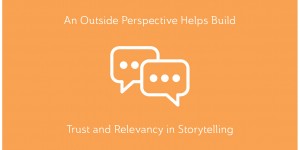Customized thank you pages are a great way to communicate with people that you already know want to be involved with your organization. Chances are your online visitors are re-directed to a page after they’ve signed up for your mailing list, made a donation, or registered for an event through your website. Use these moments to tell a quick story rather than the standard boilerplate thank you for (blank) page that has zero impetus for them to stay on the site any longer. Make use of photos or videos to thank them for taking action or offer more content that allows them to get more involved. Here are some great examples:
Organizations spend a lot of time documenting their work. How many folders do you have on your computer full of pictures you haven’t found much use for beyond your annual report, special event programs, or scattered about your website? We know that captivating pictures can be great to illustrate your writing, but they can be put to more storytelling use. Try using a series of photos—or a photo essay—to create a visual narrative. This form of communication is popular among millennials and terrific for donors on the go since they evoke emotion and get your message across faster with the swipe of a thumb. You can also put these photos to good use on social platforms like Pinterest or Instagram to build-out ongoing social campaigns that evolve over time. With photo essays you’ve got all the elements of cause-oriented storytelling: a strong protagonist, an identified problem, and a hero (your organization) that wants to make the world a little better.
Testimonials are often one thing that organizations tend to back-burner and try to capture at the last minute, particularly for major grants applications. Positive feedback and anecdotes are constantly around us and a clever marketer can turn those into great stories. But what about getting the information straight from the horse’s mouth? Ask participants in your programs or other beneficiaries of your organization to talk about their experience, how they’ve been helped, or to say thank you! You can use videos or even animated images to make this fun and more engaging. Plus, you can extend the reach of this content again by using it on social media—that way your supporters can help spread the message for you.
The landscape is always changing, so it’s important to find new ways to do those old to-do’s. One thing is for certain, it’s never too late to make an impact. No matter which technique you try out, make sure that your stories–both visual and written–relate back to your mission. This way, since you’ll be starting with “why”, your message is clear and consistent across the board.
Statistic Resource:
Charityinfo.ca, “Create a Warm Welcome”, Leah Eustace, April 29, 2013









